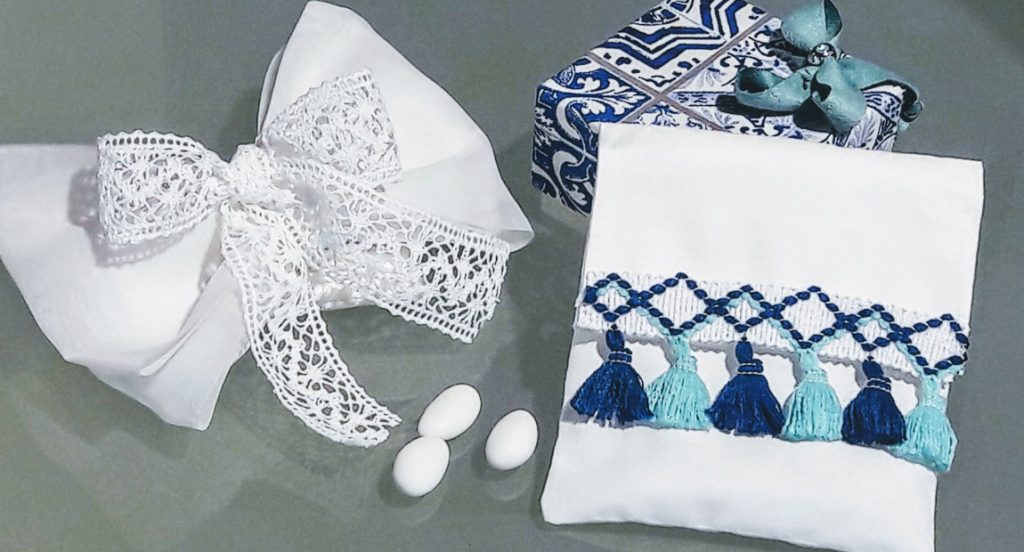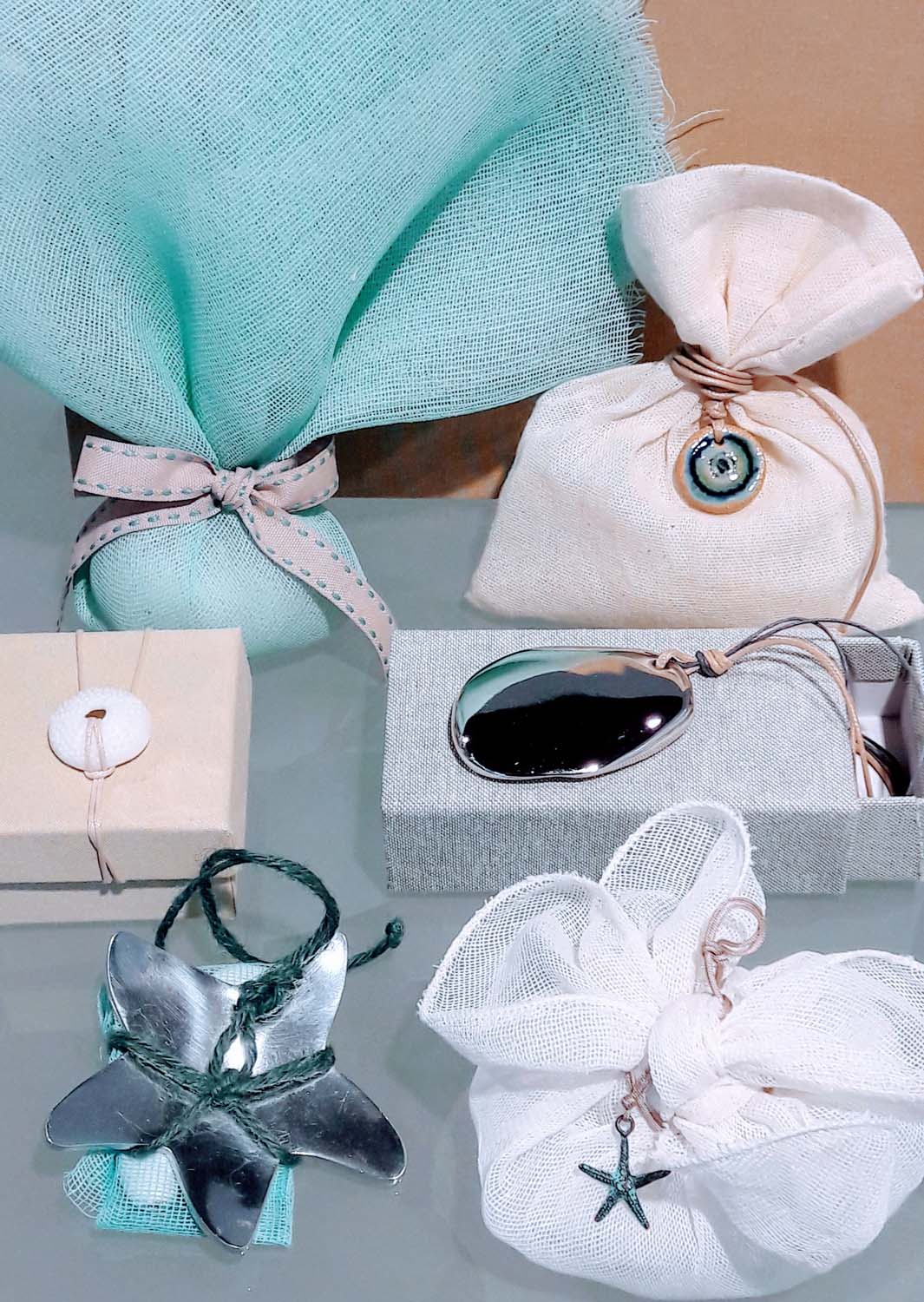A bomboniere in its classic form is simple. If there is one single object that represents a momentous, joyous event in Greece, is the Greek Bomboniere. No wedding or baptism is without these beautiful, symbolic favors- they are deeply bound to Greek tradition.
Liana Zervou, of Tiara, who creates unique and beautiful bombonieres, captures the essence of the classic bomboniere: “The traditional bomboniera is made of white tulle layers, made as a pouch and tied with a white ribbon where sugared almonds are included. It is all white to symbolize the purity of the bride and the offering was mainly the sugared almonds.”
The almonds themselves- each coated in a sweet white shell of sugar- are sometimes called Jordan almonds elsewhere. In Greece, they are called “Koufetta” when you by them on their own. They sound simple, but they are absolutely delicious, and made even sweeter by the association they have with life’s most blessed events.
The symbolism of the Greek Bomboniere: The Sugared Almonds
The symbolism of the bomboniere- especially as related to weddings- is actually complex. That symbolism starts with the almonds themselves. Of course, they are white to symbolize purity. But their natural shape, too, has a meaning. In their hard white sugar shells, they look like small eggs. The egg is symbolic of fertility, but also of the new life that begins with marriage. The intended meaning of the sweetness is, of course, not hard to interpret. And in fact, the ancestors of today’s almonds in their perfectly white shells were honey dipped almonds that the priest offered in the church to the newly wedded couple.
Today’s almonds in their hard shells offer even more meaning. Of course, the sweet sugar shell refers to the sweetness of married life. But its hardness? That symbolizes endurance. Some give a third, beautifully “bittersweet” meaning. The sweet shell gives way to the bitterness of the almond inside- they mingle, balance each other, and become inseparable.
How many “Koufeta” are in a Greek Bonboniere?
The number is not random, but also meaningful. A bomboniera must contain an odd number of almonds- indivisible by two, as the couple should also be indivisible. Some say the number should in fact be a prime number, divisible only by itself, and by one- another bittersweet reference, that the couple can be separated only by death. Most people will say without hesitation thought that the number should be five- one for each blessing to wish the couple: health, joy, fertility, prosperity, and long life.
The types of Bombonieres
These five wishes are also suitable for a baptism, whose bombonieres also contain five. But there the similarities end. In fact, each bomboniera is unique. Engaged couples and young parents alike love the opportunity the traditional bomboniera gives them to be creative and to express a color scheme or even a special theme that their wedding or new baby’s baptism is centered around.
Importantly, it is also an opportunity to offer a gift to the guests- something meaningful to have as a keepsake of this most special occasion. Ms. Zervou explains how the bomboniera has evolved and become more elaborate:
“Over the years the bomboniera was embellished with a small gift attached to it. This started as a small flower and in recent years it became more as a personal present to the guests. It can be a lucky charm or a small piece of jewelry usually attached to a string so that the guest can wear it. Now, the bomboniera is mainly a gift where the sugared almonds are tied in a pouch or box.”
Where do the ideas for these beautiful and whimsical gifts come from? Many couples find inspiration in the culture and environment of Greece itself- Ms. Zervou finds Greece an endless source of inspiration when working with couples to find their ideal design:
“My inspiration for the designs is mainly from the Greek landscape and the continuous history of our country. Wherever you turn your eyes in this beautiful country you can find a symbol of life.”
That is perhaps the perfect description of the Greek bomboniere- a symbol of life. Greece’s bombonieres are a beautiful tradition- a sweet expression of joy at some life’s most significant and sacred events. Have you been to a Greek Wedding or Baptism? What was the bomboniere like?






